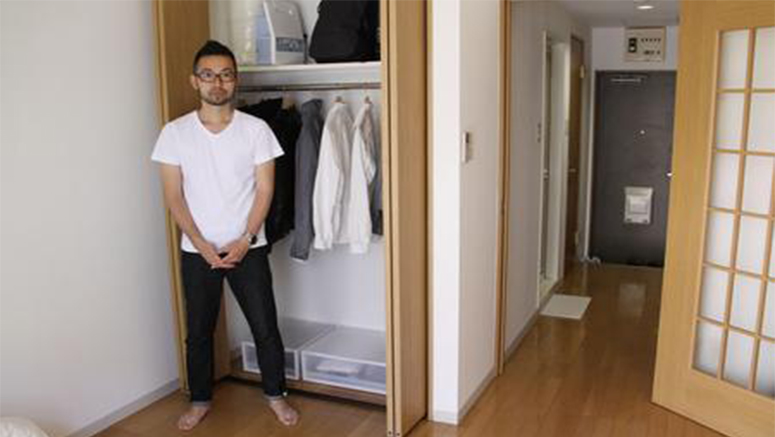In 2015, I was complaining to a friend how difficult I found it to throw things away. He wasted no time in introducing me Marie Kondo’s bestseller “The Life Changing Magic of Tidying Up” and for a short while I threw myself into her technique, wandering round my apartment, picking up items randomly and asking myself “Does this spark joy?” (According to Kondo, if an item doesn’t ‘spark joy’ then it has to be discarded immediately).
But I simply couldn’t get into it. Partly, I think, this was because I couldn’t take the idea seriously. My favourite childhood books, the tiny statue I’d bought in Zimbabwe 25 years ago, a Venetian vase I’d been given as a birthday gift - was I really supposed to throw them out or, alternatively, respect them’ and ‘give thanks for them being in my life?’ What she was suggesting seemed to me bizarre. Even worse, Kondo is a huge fan of ‘epic clear outs’ and I’m the opposite - I really need time to pack things up and kiss them farewell. Kondo’s method might have changed millions of lives, but it didn’t change mine.
Almost three years later (with many more possession now filling my apartment) I’ve decided to try again, and now armed myself with a copy of “Goodbye Things - the new Japanese Minimalism.” Apparently, I’ve been told, author Fumio Sasaki hasn’t adopted Kondo’s ‘spark of joy’ mantra - no he’s gone one radical step further by daring his reader to ‘discard objects even when they do spark joy! He’s not talking about decluttering - he’s talking about leading a life that’s essentially minimalist. Gulp.
Sasaki, I discovered, as I read on, owns almost nothing. It wasn’t always this way…a while back he was a typical typical Tokyo professional - stressed, anxious, and permanently exhausted. He needed answers and decided to begin with stripping down his possessions……until he was left with almost nothing. The book’s photographs of his living space say it all - with nothing more than a small, roll-up futon, a desk and a wooden box, his apartment has a monastic feel to it.
But Saski’s more than ok with this, because in his opinion, life isn’t about how many things you own, rather how they make you feel. As he continues, he makes plenty of valid points - including that we all own way too much, that our belongings are bogging us down (psychologically) and as a result we are damaging our emotional well—being.
The more I read, the more I find myself nodding. Personally, I’m not an fan of conspicuous consumption and you’re more likely to find me in a coffee shop than a shopping mall, but nevertheless my apartment is full of belongings that haven’t seen the light of day in who knows how long. I have shelves crammed with books - now I love my books but how many of these have I read in the last few years, and how many (in reality) will I read again? And the clothes in my wardrobe - why am I hanging on to suits I’ll never wear again, and sweaters that I don’t even care for any more?
Don’t get me wrong, I don’t want to throw out my worldly goods, which is essentially what the author is advocating, but I do want to be more proactive when it comes to keeping my belongings to a reasonable number. The practical aspect of all this makes sense too, as he points out - if you own fewer clothes, you don’t have to agonise about what to wear each morning. If you own fewer books, you won’t have to spend hours dusting shelves. Unlike Kondo’s book (which left me feeling irrationally hostile) the author comes across as both humble and inspiring. Moreover, he is reassuring in his belief that letting go of things does not equate to a loss of identity (which perhaps, subconsciously anyway, is one of my great fears).
The practical aspect of the book (the tips he gives) is very useful and reinforces his important belief that discarding material possessions, leaves you with an infinitely clearer head. For the author, saying goodbye to many of his belongings gave him the impetus to start taking better care of his body and mind. No wonder so many of his advocates admit that once they’ve adopted some of his methods, their feelings of being ‘overwhelmed’ by clearing up dissipate. Also no wonder that so many of his followers call him ‘inspirational’ and his ideas ‘revolutionary.’ As for the fear so many of us have of not throwing away something, for fear that we ‘may need it some day?’ Saski is calm and clear in his response: “Let it go. That ‘some day’ may never come.”
In conclusion, whilst I’m not ready to adopt an entirely minimalist lifestyle, I was inspired to throw away some broken furniture, give away a few books to friends and donate three bags of clothes to a charity store. I hope I’ve started as I mean to go on. Read this book (but try to borrow it rather than buy it - after all, it’s just one more possession!)



